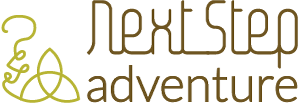Play Triangle Tag
Triangle Tag is always fun, but especially when you play in the water. It wears you out too. Wearing people out–the main objective of parenting, puppy raising and camp. Not sure how you’d play Triangle Tag game with a puppy, but I think we could figure it out. On this hot September day it’s appealing to think about.
The Triangle Tag game I remember best was in the pool in Sun City, AZ when my folks lived out there. My brother and I took our kids; Kate and Theo were little and our cousin John was there too. He was the prime candidate for wearing out. He always had soooo much energy. The game only takes four people to play, so Dave and I must have taken turns sitting it out. It may have gotten too intense for Theo too, like the time he got shaving cream in his eyes when we played Bunny Tail Tag. But that’s another story.
To start the game, three people hold hands to make a triangle. One of these is the target. The fourth person is it, on the outside of the triangle. Their job is to tag the target. The two “guards” in the triangle do their best to keep the target from getting tagged. When the target does get tagged, they’re it and the original “it” becomes part of the triangle. I like to play at least long enough for everyone to be it.
When you play in the pool, there’s a lot of splashing and laughing, and it’s harder to move quickly than on dry land. If the target is a small person, they can just kind of pick up their feet and get pulled around by their two guards. This works best in the water; on land it can result in dislocated shoulders and skinned knees.
I’ve used Triangle Tag to divide large crowds groups and make them more manageable. It’s a good mixer if you play People to People first. By the end of People to People, partners usually don’t know each other very well and you can combine pairs and go right into Triangle Tag.
Triangle Tag is a nice warm-up for trust activities. I like to lead into partner games and stretches with it, and then initiatives that require more trust. It will definitely energize a group and get a laugh.
Triangle Tag was a hit in our pool when the kids were little. It’s hard to believe there was ever a 10′ by 30′ pool back there, complete with pond, decks, hammock and swing. Oh, and a hot tub. I believe we used to play Triangle Tag in the hot tub. I don’t recommend that. That’s our pool in the picture at the top of this post, taken the summer of 2007 right before we took it out and turned the back yard into a wildlife refuge. If you want to play Triangle Tag back there now, it will have to be on dry land.









